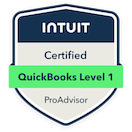- Need Professional Bookkeeper?
Using QuickBooks Online reports for financial planning is a smart move—it gives you real-time data and a clear picture of your business’s financial health. Here’s how you can leverage the most useful reports to help with planning:
Use it for: Evaluating profitability over a specific time.
How it helps: Shows income, expenses, and net profit. Helps identify spending patterns or revenue dips that can impact planning.
Use it for: Understanding assets, liabilities, and equity.
How it helps: A snapshot of financial position at a given time. Useful when planning for loans, investments, or capital improvements.
Use it for managing liquidity.
How it helps: Forecast upcoming cash needs and avoid shortfalls. Compare past trends to predict future behavior.
Use it for: Comparing planned vs. actual performance.
How it helps: It helps you course-correct in real time and see where you’re over- or under-spending.
Use it for: Managing customer payments.
How it helps: Identify slow-paying customers and improves collections. Better predict future cash inflows.
Use it for: Staying on top of what you owe.
How it helps: Avoid late payments and plan for upcoming cash outflows.
Use it for: Revenue analysis.
How it helps: Understand which products/services are most profitable or underperforming.
Use it for: Identifying major expenses.
How it helps: Review vendor relationships, renegotiate contracts, or find cost-saving opportunities.





Bookkeeping Service Company
Copyright © 2025. All rights reserved.